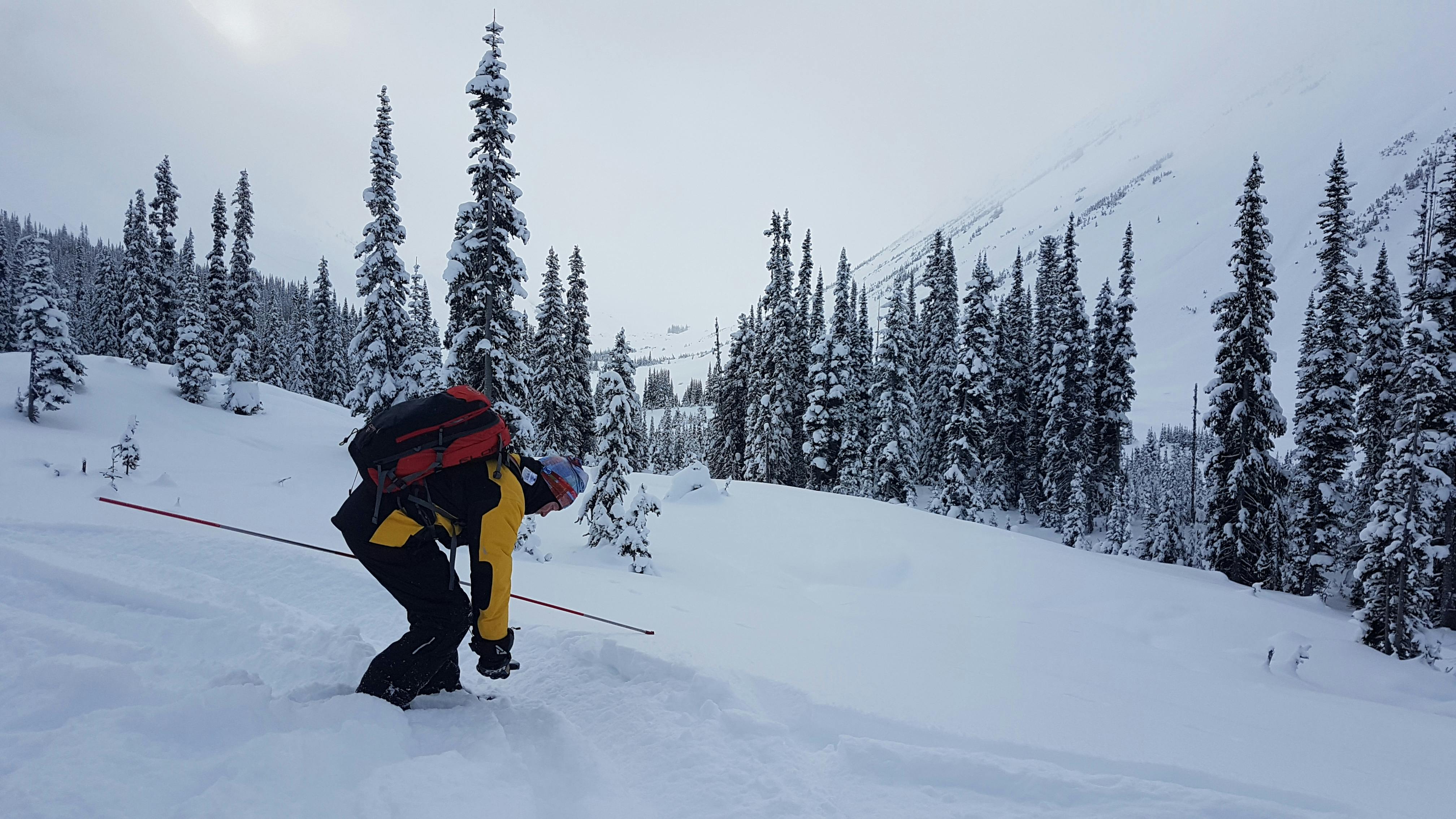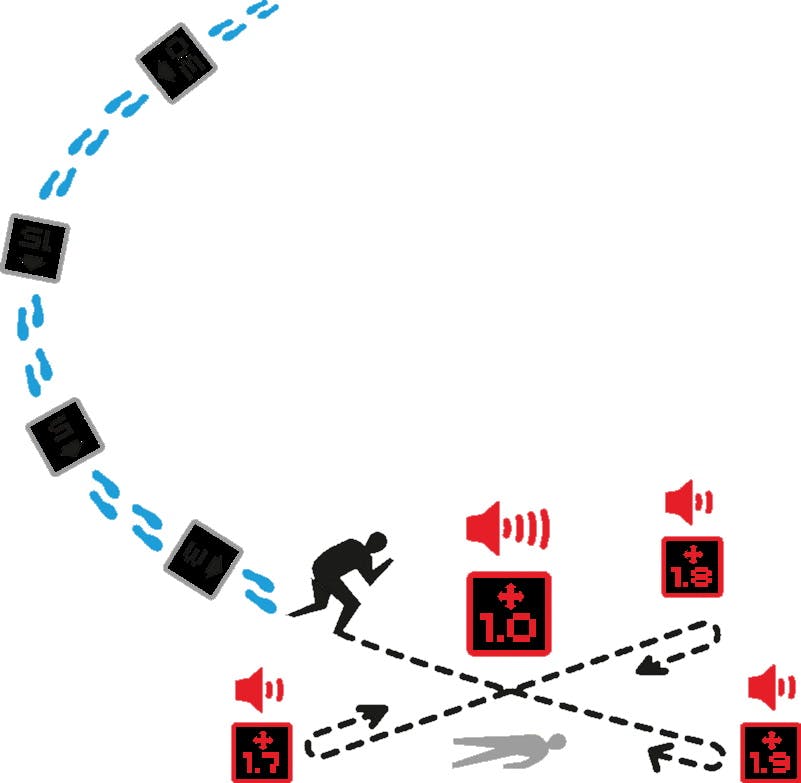
- Credit
- Curtis Pawliuk

- Credit
- James Floyer
A transceiver search is the phase of a companion rescue that involves using an avalanche transceiver to locate a burial subject wearing another transceiver. Transceiver searching is divided into three phases:
- Signal Search: Beginning from the point where the person buried was last seen, the transceiver searcher moves across the avalanche path in a methodical pattern in an effort to locate a transmitting signal with their transceiver.
- Coarse Search: Once a signal has been acquired, the searcher orients their transceiver to point in the direction indicated by the device and moves quickly to reduce the distance indicated. Care is taken to slow down and approach the snow surface as the distance indicated approaches the subject's possible burial depth. This phase of the search ends when the point of the strongest signal is reached and then exceeded by the searching transceiver.
- Fine Search: When the strongest transceiver signal is reached, the searcher makes a mark on the snow surface as a visual clue to prevent searching beyond this point. Without re-orienting the transceiver, the searcher moves directly in reverse, again passing the point of the strongest signal and again marking the snow surface when the closest distance is exceeded. The searcher can then proceed to a pinpoint search or, if the point of the strongest signal is suspected to be inaccurate, they can perform the same actions on a side-to-side axis beginning from the point of the strongest signal.